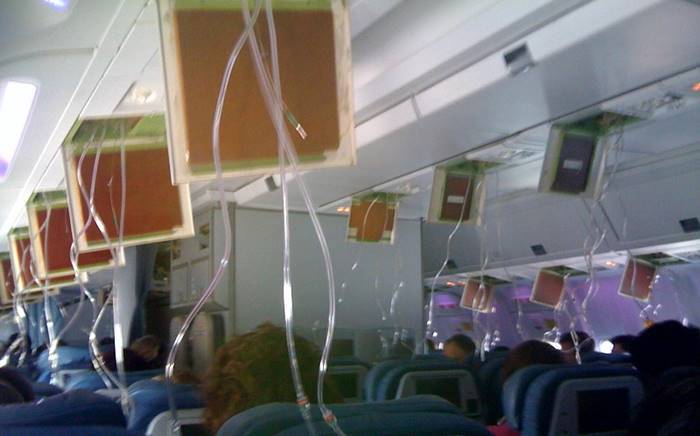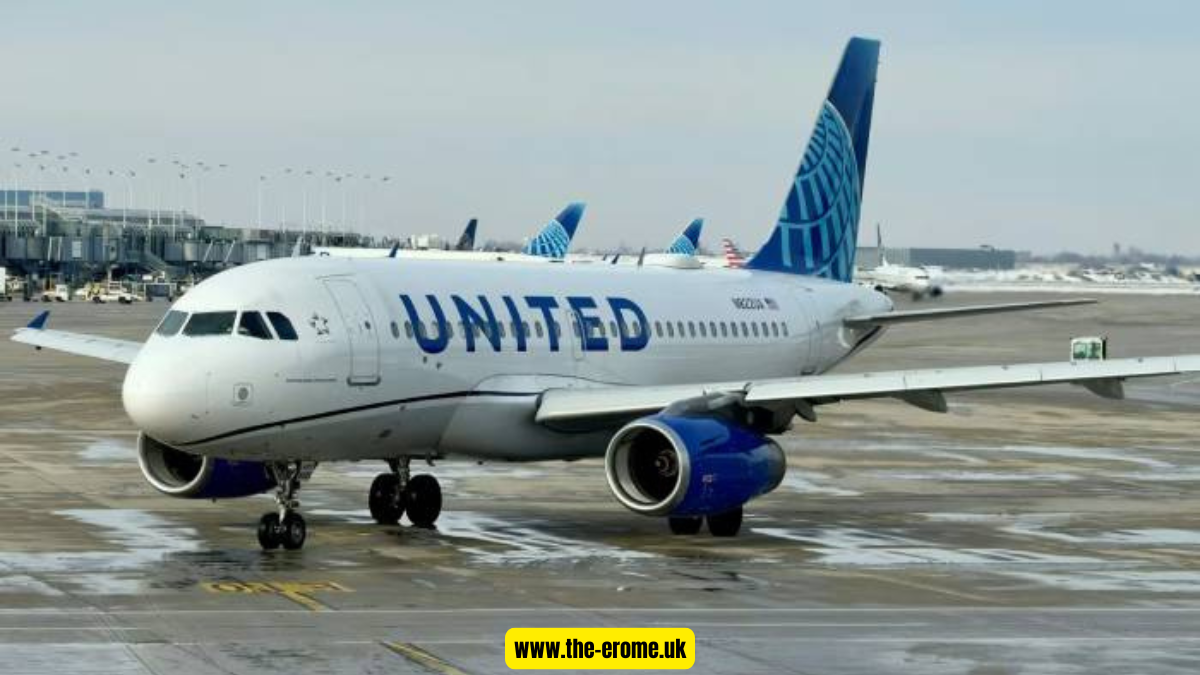When a routine flight becomes headline news, it reminds the world why aviation safety remains one of the most critical priorities in air travel. The United Airlines Flight UA770 emergency diversion captured global attention in 2025 after a sudden cabin pressure failure forced pilots to declare an in-flight emergency. What began as a smooth transatlantic journey turned into a dramatic yet controlled event that demonstrated the precision, skill, and professionalism of modern aviation crews.
United Airlines Flight UA770 was operating its scheduled route when sensors in the cockpit detected abnormal cabin pressure levels. The pilots followed established emergency procedures and made the decision to divert the aircraft toward London’s Heathrow Airport. The safe landing highlighted not only the efficiency of United’s crew but also the effectiveness of international safety systems designed to protect passengers at high altitudes.
Understanding United Airlines Flight UA770 and Its Route
United Airlines Flight UA770 typically serves as a long-haul route, connecting major international cities with United’s operational hubs. The flight, operated on a modern aircraft equipped with advanced pressurization systems, departed with hundreds of passengers expecting a standard journey. The weather was clear, the flight path stable, and everything pointed to a routine crossing until the mid-point of the flight.
As the aircraft cruised over the Atlantic, pilots began noticing irregular pressure readings from the cabin environment control system. Recognizing the potential risk, the crew made the decision to reroute for safety. It was a choice that reflected both experience and adherence to strict aviation standards. The United Airlines Flight UA770 emergency diversion would soon be reported as another example of why early detection systems are critical for passenger safety.
The Emergency Diversion: Timeline of Events
Midway through the journey, the cabin pressure indicators began to show inconsistencies that suggested a gradual depressurization. The pilots, following international flight safety protocols, initiated an immediate descent to a lower altitude where breathable air pressure could be maintained naturally. Communication with air traffic control was seamless as the aircraft began its controlled turn toward Heathrow Airport.
Passengers were kept informed as the crew calmly explained the situation. Oxygen masks were prepared for potential deployment, but the flight remained stable. Within a few hours, the aircraft safely touched down in London, where emergency teams were waiting. The incident proved that quick decision-making and expert training can turn a potentially life-threatening situation into a well-managed, safe conclusion.
Cabin Pressure Failure Explained

Cabin pressure systems maintain a stable, breathable atmosphere inside an aircraft even as it cruises at altitudes above 30,000 feet. When these systems malfunction, oxygen levels can drop rapidly, creating potential health risks for everyone on board. The issue affecting United Airlines Flight UA770 emergency diversion involved a malfunction within the air circulation or valve mechanism, which triggered automatic warnings in the cockpit.
A cabin pressure failure doesn’t necessarily mean danger if managed correctly. Modern aircraft are designed with multiple backup systems and safety redundancies. The flight crew’s swift reaction demonstrated the value of consistent training and maintenance protocols. Following the event, maintenance teams inspected the aircraft to identify and correct the cause of the malfunction, ensuring full compliance before returning it to service.
Safety Protocols and Crew Response
The response from the crew during the United Airlines Flight UA770 emergency diversion was both professional and efficient. Pilots quickly coordinated with air traffic controllers to chart a safe path to Heathrow, while cabin crew reassured passengers and prepared them for a potential emergency landing. The calm atmosphere on board prevented panic and allowed the team to focus on execution.
United Airlines follows strict training requirements for all crew members to handle emergencies, from engine issues to cabin pressure anomalies. Their coordinated response reflects years of simulation drills and adherence to international aviation standards. The incident reaffirmed why passengers can have confidence in the safety of commercial aviation, even when unforeseen technical problems occur mid-flight.
Landing at Heathrow and Immediate Aftermath
As the aircraft approached London, Heathrow Airport activated its emergency response protocols. Fire and medical teams were on standby, though their assistance was ultimately not required. The landing was smooth, the disembarkation orderly, and every passenger accounted for without injury. This successful conclusion marked another safe outcome in commercial aviation history.
After landing, engineers from both United Airlines and British aviation authorities began inspecting the plane. Initial reports confirmed a cabin pressure malfunction but ruled out any structural issues. Passengers were accommodated in nearby hotels as the airline arranged alternate travel plans. The professionalism shown during and after the United Airlines Flight UA770 emergency diversion demonstrated the strength of collaboration between flight crews and airport emergency services.
Investigation and Industry Impact
Aviation safety regulators, including the FAA and UK Civil Aviation Authority, conducted a review of the event to ensure compliance and identify potential improvements. Preliminary findings showed that the crew’s decision to divert was both timely and appropriate. Such investigations help refine future safety standards across the global airline industry.
Incidents like the United Airlines Flight UA770 emergency diversion reinforce the importance of constant aircraft maintenance and technological innovation. Airlines routinely update their inspection cycles and upgrade safety systems to prevent similar occurrences. The aviation community uses each incident as an opportunity to learn, adapt, and enhance the already impressive safety record of modern air travel.
Passenger Experience and Public Reaction
Passengers later shared their experiences online, expressing gratitude toward the pilots and cabin crew for maintaining order throughout the event. Many described the situation as tense but under control, highlighting how clear communication made all the difference. Social media quickly spread the news, drawing praise for United’s professionalism and transparency.
Public reaction to the United Airlines Flight UA770 emergency diversion was largely positive. Travelers and industry watchers commended the crew’s adherence to safety procedures and the smooth handling of an unexpected emergency. In a world where aviation incidents can easily create fear, this event served as a reminder that preparation and training make the skies safer for everyone.
Conclusion
The story of United Airlines Flight UA770 emergency diversion stands as a testament to the precision and expertise of modern aviation professionals. A cabin pressure failure that could have posed a serious risk was managed with calm, skill, and adherence to safety protocol. Every step — from early detection to emergency landing — reflected the industry’s commitment to protecting passengers above all else.
While no one ever wants to experience an in-flight emergency, this incident demonstrated why commercial aviation remains one of the safest forms of travel. Through quick action and teamwork, the crew of United Airlines Flight UA770 ensured that a potential disaster became a powerful story of safety, competence, and trust in the skies.
Frequently Asked Questions
What caused the United Airlines Flight UA770 emergency diversion?
The diversion occurred due to a malfunction in the cabin pressurization system that required the crew to land safely at Heathrow.
Were there any injuries reported?
No passengers or crew were injured. Everyone onboard landed safely.
What is a cabin pressure failure?
It’s a malfunction in the system that maintains air pressure inside the aircraft cabin, prompting emergency descent and landing procedures.
How did United Airlines handle the situation?
United provided passenger support, launched a full technical inspection, and cooperated with aviation authorities for an investigation.
Is flying still safe after incidents like this?
Absolutely. Events like the UA770 emergency diversion show that safety measures, training, and technology continue to make air travel remarkably secure.




